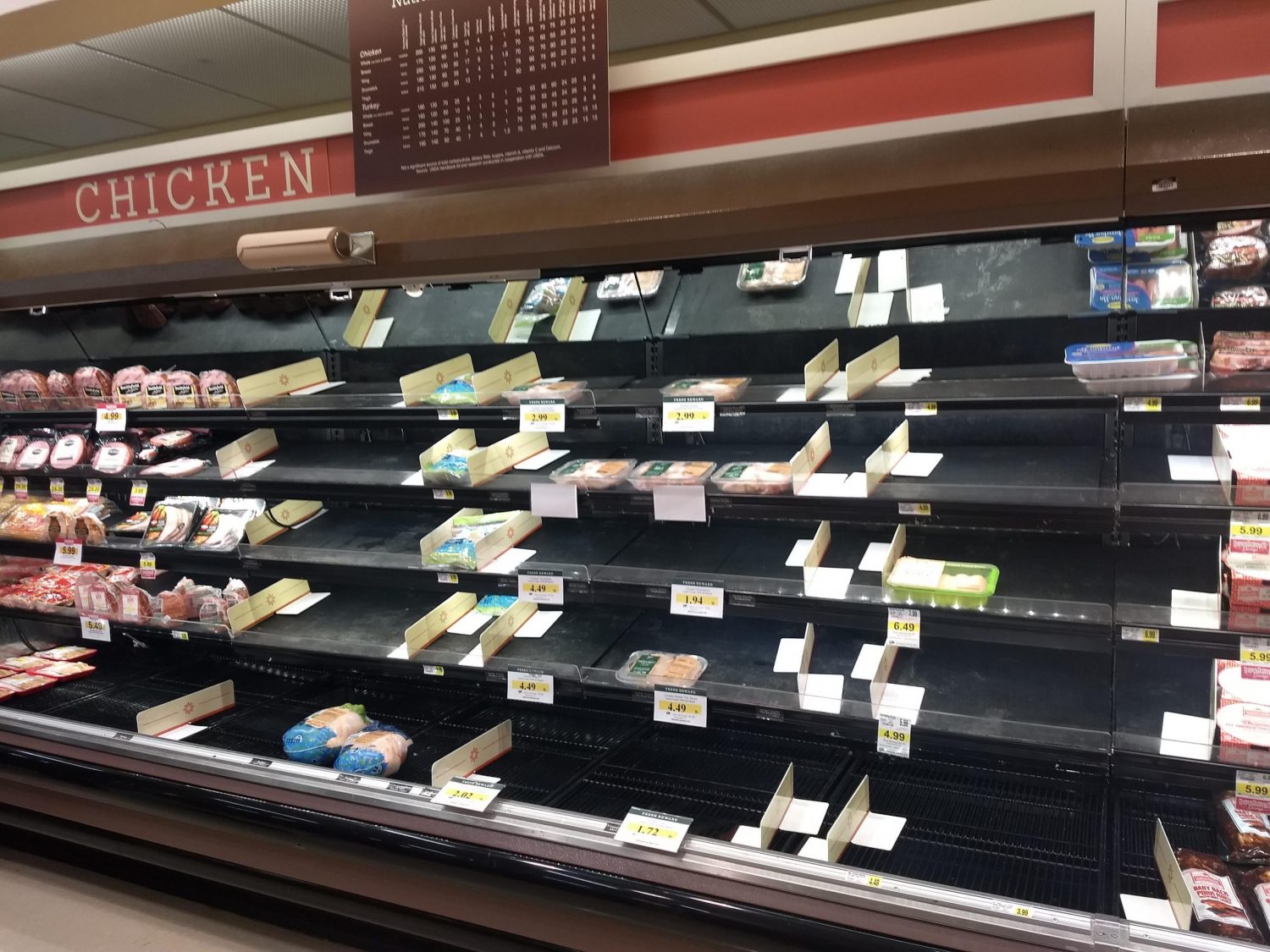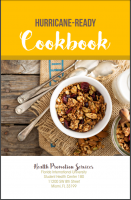
As soon as it was clear Tropical Storm Isaias might end up a hurricane on North Carolina’s coast, we started our storm planning right where we usually do.
“I guess I’d better go to the grocery store,” my housemate said.
Supporter Spotlight
“Yeah, wipe out the milk and bread aisles,” I joked before seriously reminding him not to buy anything perishable.
When I opened the fridge after his supermarket run, it was, of course, jammed full of milk, cheese, frozen foods and a bottle of cava best served chilled.
What is it about approaching hurricanes that sends us into a frenzy of illogical food buying? Even before Jim Cantore decides where he’ll be lashed by wind on camera, we start hoarding milk and bread, despite knowing both mold quickly once power is cut and storm-related humidity rises to dripping-wet levels.
Psychologists deduce that sticking to routines makes us feel safe. Buying staple bread and milk as we would under normal circumstances represents our hopes that a storm will pass us by, that electricity will steadily pump cold air through our refrigerators. Canned beans and tinned tuna forecast the disaster we don’t want to face.
Purchasing perishables may feed our minds the calm we crave before a storm, but what do we really need to survive days without electricity and access to the supermarket following a hurricane? Here’s advice from disaster managers.
Supporter Spotlight
How much food you need after a hurricane
Have at least a three-day supply of water and nonperishable food for yourself and all members of your household, FEMA says.
Plan on at least one gallon of water per person per day, FEMA adds. That eight 8-ounce bottles or four 16-ounce bottles per person, per day.
What to buy before a hurricane
When shopping, think healthy, high-energy foods that your crowd will eat, and don’t forget everyone’s dietary restrictions, the U.S. government advises at its Ready website that promotes preparedness.
Stock up on foods that require no cooking and taste good hot or cold. Think protein bars, jerky, dried fruit, nuts and nut butters, longer-lasting fresh produce such as carrots, apples and oranges.
Consider tuna in pouches, fruit cups, granola bars and powdered milk. Canned meats, milk, seafood, vegetables and fruit are obvious choices. Choose crackers over bread.
Purchase package sizes that best fit your family’s needs to avoid leftovers or wasted food.
How to plan hurricane meals
 Think about foods that can be mixed together easily to create satisfying meals. For instance, a can of garbanzo beans, a can of tuna, chopped olives and chopped pimentos stirred together with a little olive oil and dried oregano makes a nice salad to eat with crackers. Oats soaked overnight can be mixed with raisins, nuts, canned milk and chopped fresh apples.
Think about foods that can be mixed together easily to create satisfying meals. For instance, a can of garbanzo beans, a can of tuna, chopped olives and chopped pimentos stirred together with a little olive oil and dried oregano makes a nice salad to eat with crackers. Oats soaked overnight can be mixed with raisins, nuts, canned milk and chopped fresh apples.
Before shopping, check out “The Hurricane Cookbook.” Students in Florida International University’s dietetics and nutrition program created the book’s healthy, no-cooking-required recipes as well as a handy shopping list and tips on food safety.
Yummy-sounding recipes include chocolate chia pudding, lentil tacos and salmon with new potatoes in Dijon herb dressing. Find the free book by searching “hurricane cookbook” at fiu.edu.
3 things to never forget
Make sure you have a manually operated can opener.
Remember condiments such as mustard, mayonnaise and ketchup. Look for individual packets or use up what you have.
Limit foods that make you thirsty, such as salty snacks, but include some stress-busting comfort foods like salsa and low-salt chips, crunchy snacks, Pop-Tarts, pudding cups, cookies, M&Ms and a couple bottles of wine.
What food to keep after a hurricane
Once power is restored, clean out the refrigerator and freezer, the USDA advises. “If food is partly frozen, still has ice crystals, or is as cold as if it were in a refrigerator (40 degrees), it is safe to refreeze or use. It’s not necessary to cook raw foods before refreezing,” the agency reports.
Throw out foods that have been warmer than 40 degrees for more than 2 hours, although butter, jams, jellies, mustard, ketchup, barbecue sauces and hard cheeses may be OK. Never taste a food to determine if it has spoiled and always follow the mantra “When it doubt, throw it out.”







